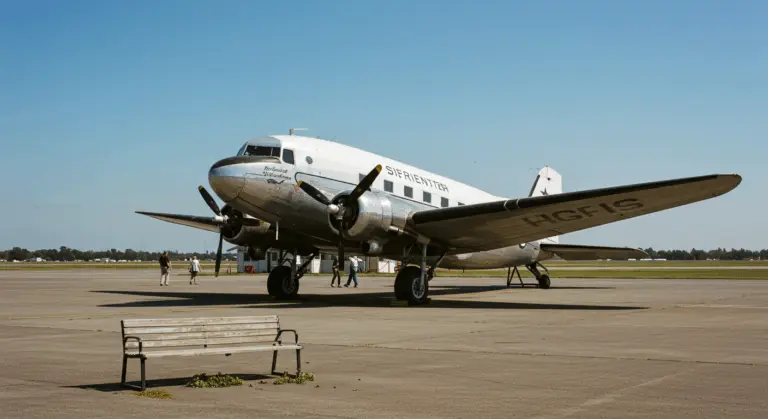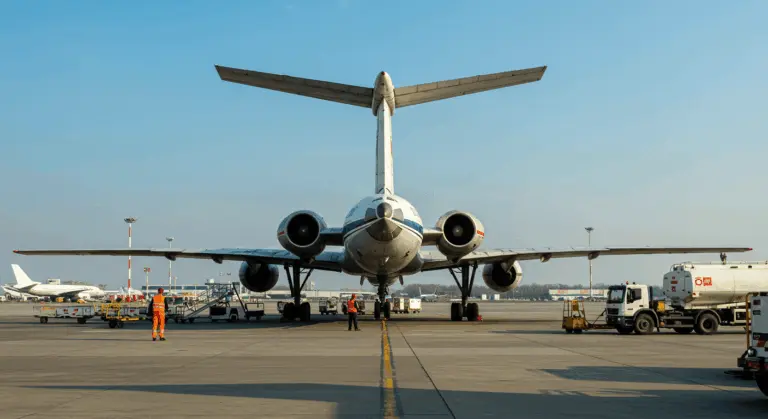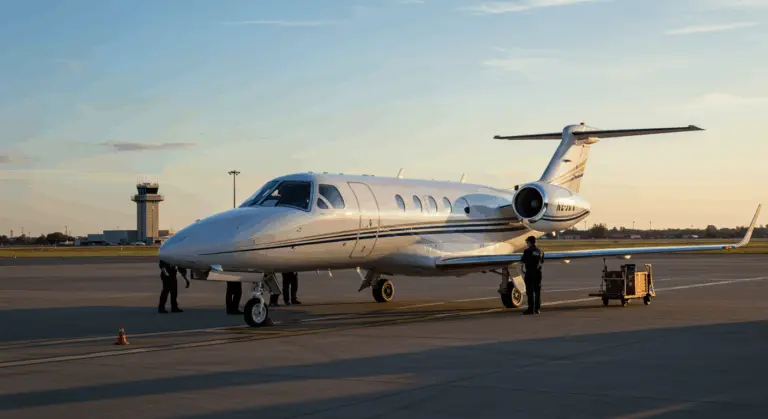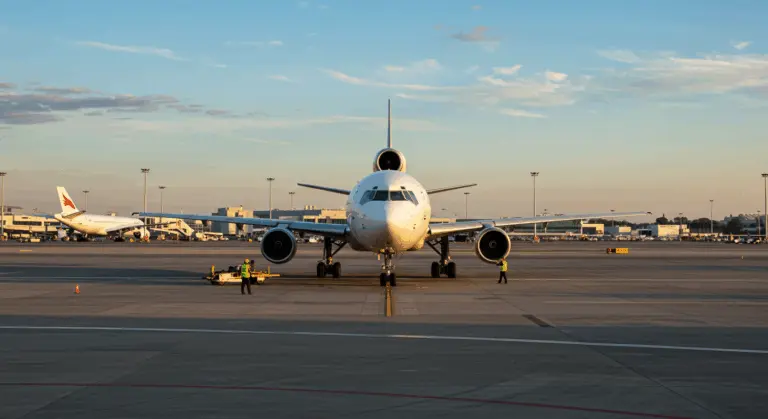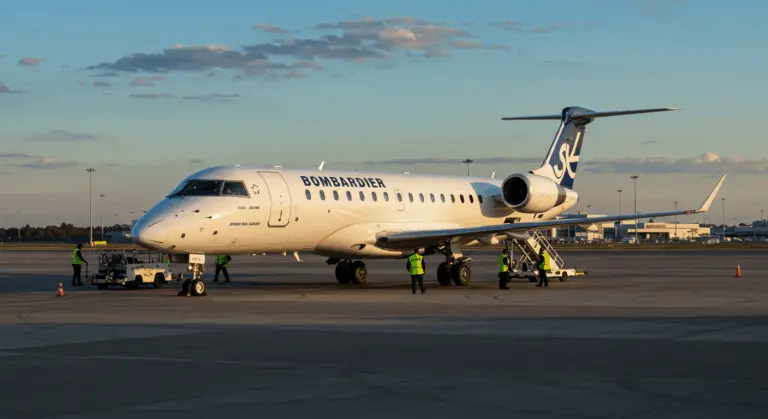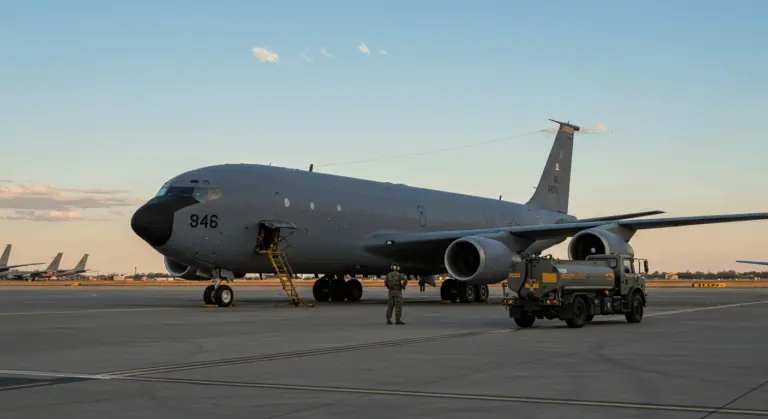Overview of the ATR 72 Aircraft
The ATR 72 stands as a twin-engine turboprop, short-haul regional airliner born from the Franco-Italian partnership of ATR (Anions de Transport Regional). This pillar of regional aviation serves roles well beyond passenger transport, embracing diverse roles including corporate transport, cargo operations, and maritime patrol missions.
Sporting its distinctive high-wing silhouette and twin turboprop power plants, the ATR 72 offers excellent operational flexibility across diverse environments. Its standard passenger layout seats up to 78 travelers—perfectly sized for regional routes where larger jets simply wouldn’t make economic sense.
The modern ATR 72–600 showcases a sophisticated glass cockpit, integrated multipurpose computer (MPC), and advanced avionics boasting Required Navigation Performance (RNP) capabilities—enhancing both precision and safety.
From the ATR 72MP’s maritime patrol prowess to the purpose-built ATR 72-600F freighter’s cargo mastery, specialized variants showcase this platform’s impressive mission flexibility.
History and Development of the ATR 72
On January 15, 1986, ATR unveiled the ATR 72—a strategically stretched evolution of the proven ATR 42, designed to meet growing market demand for larger regional turboprops.
Development progressed rapidly. The prototype soared on its maiden flight October 27, 1988—less than three years after the program’s announcement. This remarkable timeline reflected the aircraft’s core philosophy: an intelligently enlarged ATR 42 that preserved proven engineering principles while significantly increasing capacity and performance.
This approach was transformative for ATR. By thoughtfully extending the battle-tested ATR 42 airframe and systems, they created an economical solution for higher-demand routes while preserving crucial operational commonality for airlines.
Origins of the ATR 72
Further Development and Variants
The ATR 72 has matured through several evolutionary variants:
Today’s production standard—the ATR 72-600—represents the family’s most advanced version. Introduced with comprehensive avionics upgrades featuring a sophisticated glass cockpit, the -600 series delivers enhanced pilot situational awareness while substantially reducing workload. The aircraft also benefits from incremental engine technology advances, further optimizing its already impressive efficiency credentials.
Beyond standard configurations, ATR crafted specialized variants—the maritime patrol-focused ATR 72MP and the dedicated ATR 72-600F freighter—demonstrating the platform’s flexibility.
Specifications of the ATR 72
The ATR 72 family spans multiple variants, each tailored for distinct operational demands. The current production model—the ATR 72-600—stretches 27.166 meters with a 27.05-meter wingspan, creating an aerodynamically efficient profile perfectly suited for regional operations. This configuration accommodates up to 78 passengers in single-class layout, though many operators prefer 68-74 seat configurations for enhanced passenger comfort.
The performance numbers are impressive: cruise speeds reach 275 knots (509 km/h), service ceiling tops 25,000 feet, and range extends approximately 825 nautical miles (1,528 km) with full passenger loads. Twin Pratt & Whitney Canada PW127M turboprops provide the muscle—each delivering 2,750 shaft horsepower through six-blade propellers that enhance fuel efficiency while maintaining notably quiet operation.
The cargo-focused ATR 72-600F boasts specialized modifications, including an expansive 2.95 × 1.80-meter cargo door that facilitates seamless loading of both bulk cargo and standard unit load devices. This variant offers a maximum structural payload of 9,200 kg (20,281 lb), making it suitable for regional freight operations.
Operational History and Major Operators
Since entering service, the ATR 72 has achieved strong global presence. Its winning combination of efficiency, reliability, and right-sized capacity has captivated regional airlines worldwide, proving its mettle across vastly different geographical and climatic conditions.
Civilian Operators of ATR 72
The ATR 72 attracts a notably diverse operator base—from major regional powerhouses to boutique carriers serving specialized markets. Air New Zealand stands among the most prominent, deploying ATR 72-600s across domestic regional services that connect major centers with smaller communities throughout the country. Their ATR fleet forms the backbone of domestic network strategy, delivering perfectly sized capacity on routes where larger aircraft would lose money.
Azul Brazilian Airlines exemplifies another major ATR 72 success story, leveraging the type throughout Brazil’s sprawling domestic market. The aircraft’s strong economics enable Azul to profitably serve lower-demand routes while preserving network frequency and connectivity. This operational approach has contributed to the airline’s successful expansion strategy in the Brazilian market.
IndiGo has integrated ATR 72-600s into its predominantly Airbus A320 family fleet, targeting smaller Indian markets while supporting the country’s regional connectivity initiatives. This strategic deployment demonstrates how the ATR 72 can complement larger jet operations within a comprehensive network strategy.
Other notable civilian operators include:
-
Wings Air (Indonesia)
-
Bangkok Airways (Thailand)
-B inter Canaries (Spain) -
HOP! (Air France)
Military Applications of ATR 72
Beyond widespread civilian success, the ATR 72 has shown excellent adaptability for military and government missions. Military variants emerge equipped with specialized systems and modifications, tackling everything from maritime patrol to search and rescue operations with impressive capability.
The Turkish Navy operates the ATR 72-600 TAMPA (Turkish Maritime Patrol Aircraft)—a specialized variant equipped with advanced mission systems for maritime surveillance and anti-submarine warfare. These aircraft pack sophisticated sensor suites: maritime radar, electro-optical/infrared cameras, and magnetic anomaly detection equipment. The result? Comprehensive maritime domain awareness and robust security operations.
Italy’s Air Force utilizes the ATR 72MP ”P-72A” for similar maritime patrol missions. These platforms integrate Leonardo’s advanced mission systems, enabling surveillance, search and rescue, and environmental monitoring across the Mediterranean’s vast expanse. The P-72A represents a cost-effective solution for maritime patrol requirements, offering significant endurance and sensor capabilities in a relatively compact platform.
Additional military and government applications highlight the ATR 72’s adaptability for missions beyond its primary passenger role, including:
-
Electronic intelligence gathering
-
Transport of military personnel
-
Specialized search and rescue configurations
Fuel Efficiency and Operating Costs
The ATR 72—particularly the current -600 series—leads the field for fuel efficiency in regional aviation. With typical cruise consumption around 650 kg/h, the ATR 72-600 delivers exceptional economy compared to similarly sized regional jets. This translates directly into lower operating costs and reduced environmental impact, making it highly attractive amid volatile fuel prices and mounting environmental consciousness.
This efficiency advantage stems from smart design choices: a high-wing turboprop optimized for regional flight levels and speeds. At typical cruise altitudes of 17,000-20,000 feet and speeds around 275 knots, the ATR 72 operates at its most efficient point. Here, the turboprop configuration delivers maximum efficiency—a stark contrast to regional jets often operating below their optimal parameters on shorter sectors, resulting in comparatively thirsty fuel consumption.
On a per-seat basis, the larger ATR 72 outperforms its smaller ATR 42 sibling economically—increased capacity spreads fixed costs across more revenue-generating passengers. This scaling effect contributes to the ATR 72’s popularity among operators seeking to maximize efficiency on routes with sufficient passenger demand.
Beyond fuel economics, the ATR 72 performs well in maintenance expenses and lifecycle costs. The turboprop’s relatively straightforward mechanical systems, coupled with mature support networks and extensive operational experience, yield predictable and manageable maintenance requirements. These factors collectively position the ATR 72 as a cost-effective regional solution—particularly on routes under 300 nautical miles where it performs most efficiently.
Cockpit Features and Technology
The ATR 72-600’s sophisticated glass cockpit represents a major advance over earlier variants. Five expansive LCD screens present flight information, navigation data, and systems monitoring in crystal-clear, intuitive formats. This arrangement greatly improves situational awareness while reducing pilot workload throughout all flight phases.
At the -600 series’ heart lies the multipurpose computer (MPC)—integrating diverse aircraft systems while delivering comprehensive flight management capabilities. Thales-developed avionics support Required Navigation Performance (RNP) operations, enabling precise approaches to airports plagued by challenging terrain or restricted airspace. These capabilities expand the operational envelope of the aircraft and enhance safety during adverse weather conditions.
Advanced features include synthetic vision technology—providing pilots computer-generated terrain views regardless of visibility conditions. Electronic checklists have displaced traditional paper versions, streamlining cockpit procedures while ensuring consistent operational protocols. These integrated technologies create a thoroughly modern flight deck environment that effectively balances automation with pilot authority.
Earlier ATR 72 variants sported conventional analog cockpits—advanced for their time—featuring:
-
Hydraulic-aided boosted controls
-
Anti-skid brakes
-
Auto-squaring propellers
The evolution from these initial configurations to the current glass cockpit demonstrates ATR’s commitment to incorporating technological advancements while maintaining the aircraft’s fundamental operating economics.
Cargo Capabilities of the ATR 72
The ATR 72 platform delivers substantial cargo capabilities across both passenger and dedicated freighter configurations. Standard passenger variants provide generous underfloor cargo compartments—capacity varying by model and interior configuration. These compartments enable operators to transport baggage, mail, and light cargo alongside passengers, creating valuable additional revenue streams on scheduled services.
For dedicated freight operations, the purpose-built ATR 72-600F delivers a comprehensive cargo solution. This variant boasts an expansive 2.95 × 1.80-meter cargo door, facilitating efficient loading of bulk cargo and industry-standard unit load devices. The reinforced floor can support a maximum structural payload of 9,200 kg (20,281 lb), providing substantial capacity for a regional freighter.
The ATR 72-600F incorporates extensive cargo-specific enhancements: nine vertical nets with strategically distributed attachment points throughout the cabin optimize load securing and weight distribution. The cabin features robust cargo panels engineered to withstand freight operations’ rigors, while LED lighting illuminates the entire cargo compartment for improved loading and unloading visibility.
Additional freight-oriented improvements in the -600F include:
-
A rear upper hinged door.
-
Enhanced battery capacity for ground operations.
-
An improved air management system.
These features, combined with its compatibility with standard unit load devices, enable the ATR 72-600F to serve effectively in regional logistics networks.
Conclusion: The Future of the ATR 72
As aviation continues evolving, the ATR 72 seems well-positioned to maintain regional aircraft market relevance. The platform’s established reputation for efficiency, reliability, and operational flexibility provides a solid foundation for continued success—particularly as airlines increasingly prioritize economic and environmental sustainability in fleet decisions.
Looking forward, ATR shows continued platform commitment through incremental improvements rather than clean-sheet replacement. These enhancements will likely target further efficiency gains, reduced maintenance demands, and continued avionics upgrades—maintaining competitiveness against both turboprop and regional jet alternatives.
Aviation’s growing environmental sustainability emphasis benefits the ATR 72. Its inherent fuel efficiency already positions it advantageously against regional jets—an advantage possibly enhanced through future propulsion technology developments. Industry discussions about hybrid-electric or hydrogen propulsion systems could eventually find applications in the ATR 72 platform, potentially extending its environmental advantages even further.
In the cargo sector, the dedicated ATR 72-600F addresses surging demand for efficient regional freighter capacity—particularly as e-commerce drives time-sensitive regional distribution requirements. This specialized application, combined with sustained passenger service demand connecting smaller communities to major hubs, indicates strong ATR 72 market demand across multiple operational profiles. As regional air connectivity remains vital to global transportation networks, the ATR 72 will likely continue playing a pivotal role in this essential market segment for years ahead.

